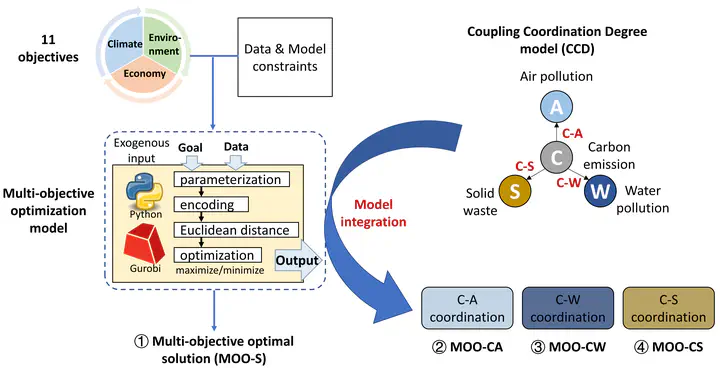A better balance-Energy transition and industrial restructuring for a sustainable economy-climate-environment pathway
 Image credit: Elsevier
Image credit: Elsevier
Abstract
Promoting socioeconomic development while curbing carbon emission and pollutants necessitates a balance among multiple conflicting objectives. Structural adjustments to industrial production and energy consumption can better balance the economy, climate and environment systems and achieve balanced development of multiple objectives. In this study, we propose a novel optimization method by integrating the coupling coordination degree model into traditional multi-objective optimization model and apply it to Jiangsu Province, China. Through industrial restructuring and energy transition, we design three pathways to achieve coordinated development of economy, climate, and environment from 2018 to 2030. Under these three pathways, Jiangsu is expected to support an average annual GDP growth of 6.80 % with an annual increase in energy consumption and carbon emissions of merely 2.57 % and 1.76 %, while significantly reducing environmental pollutants such as AN and NOx by 22.7 % and 16.4 % every year. Results indicate that the integration of the coupling coordination degree model can effectively improve the performance of the traditional optimization model, achieving better results at a lower cost. At the same time, it significantly enhances the coordination between different objectives, resulting in lower carbon emissions and higher environmental pollutant reductions by 2030. It is expected this improved model can provide support for real world decision-making and planning to facilitate more integrated development of economy, climate, and environment.